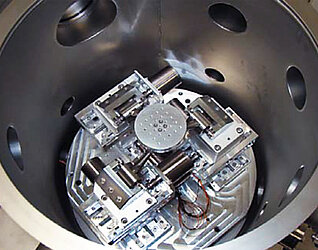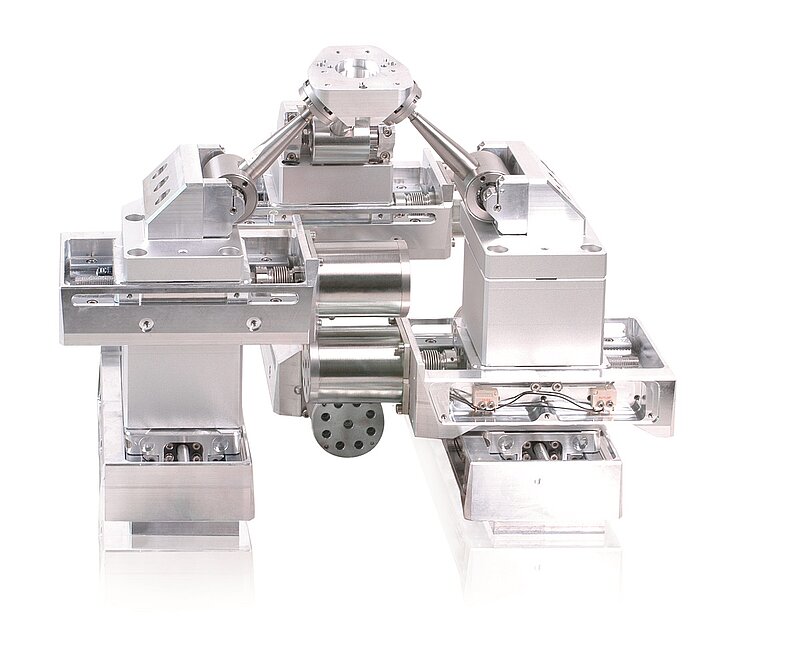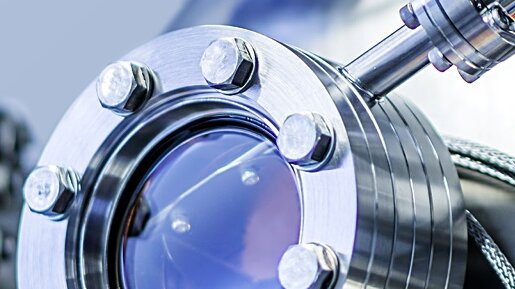Pulsed Laser Deposition (PLD) In-situ Characterization Using Synchrotron Beams
For research on climate change and glaciology based on dust contained in deep ice core samples from Antarctica and Alps both cold and contamination-free sample environments were required. The instrument operates in a cryogenic environment, at temperatures of ‐50 °C in a high‐vacuum chamber (10–7 hPa).
X-ray Absorption Spectroscopy, X‑Ray Fluorescence and X-Ray Diffraction experiments were performed to investigate the structure and the composition of dust. The analysis required a mapping of the extremely complex and inhomogeneous surface of the samples with a precision in the micrometer range.
The task was solved using a SpaceFAB positioning robot that provides motion with six degrees of freedom in all linear and angular directions. Tailored for use in high vacuum, the SpaceFAB is very compact, equipped with vacuum-compatible stepper motors, and adapted for use in a temperature range of -50 to +80 °C.
The experiment was part of the CryoAlp project at INFN LNF, Frascati, Italy. Part of this research was carried out at SSRL, anational user facility operated by Stanford University on behalf of the U.S. Department of Energy, Office of Basic Energy Sciences.



